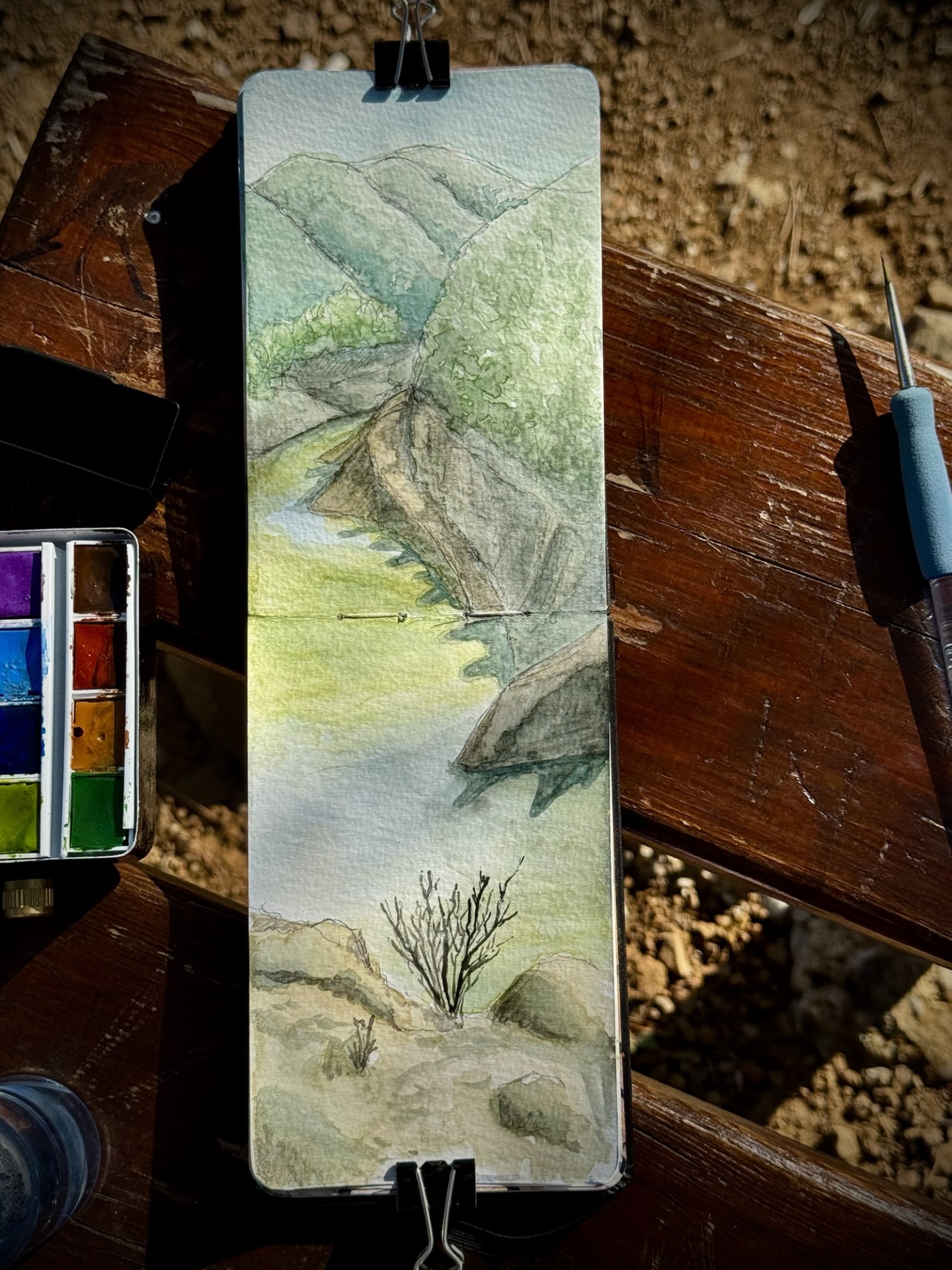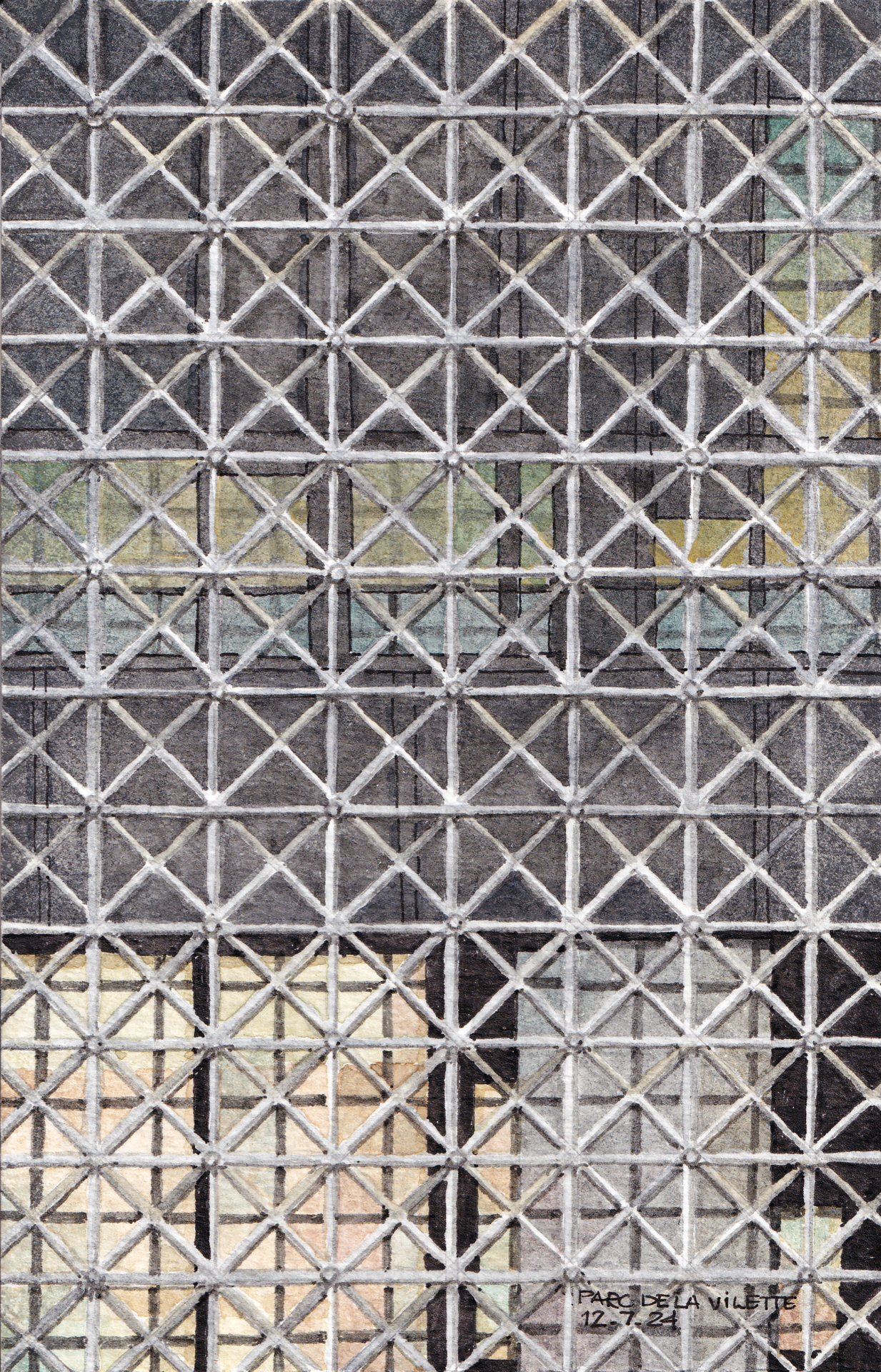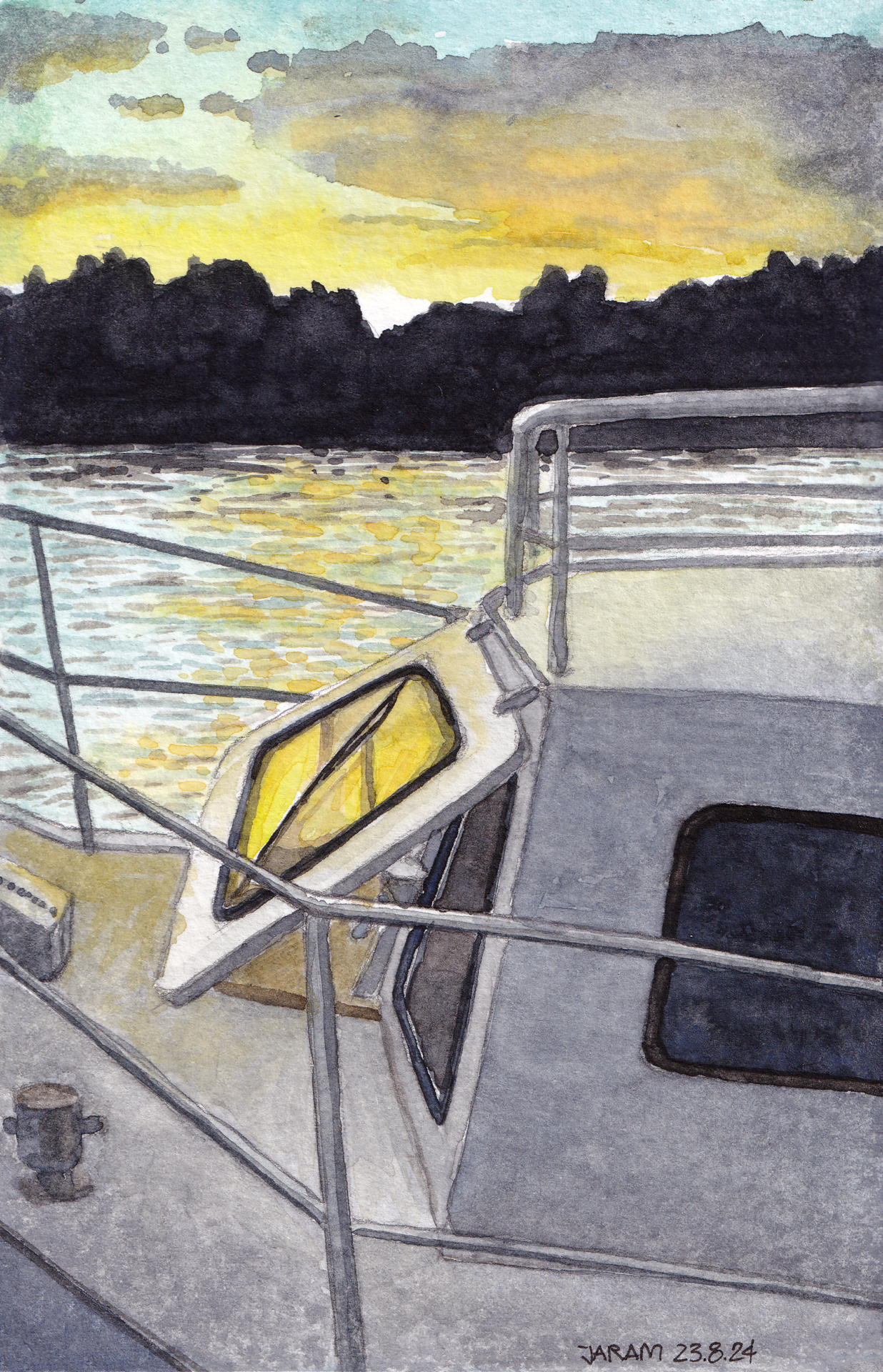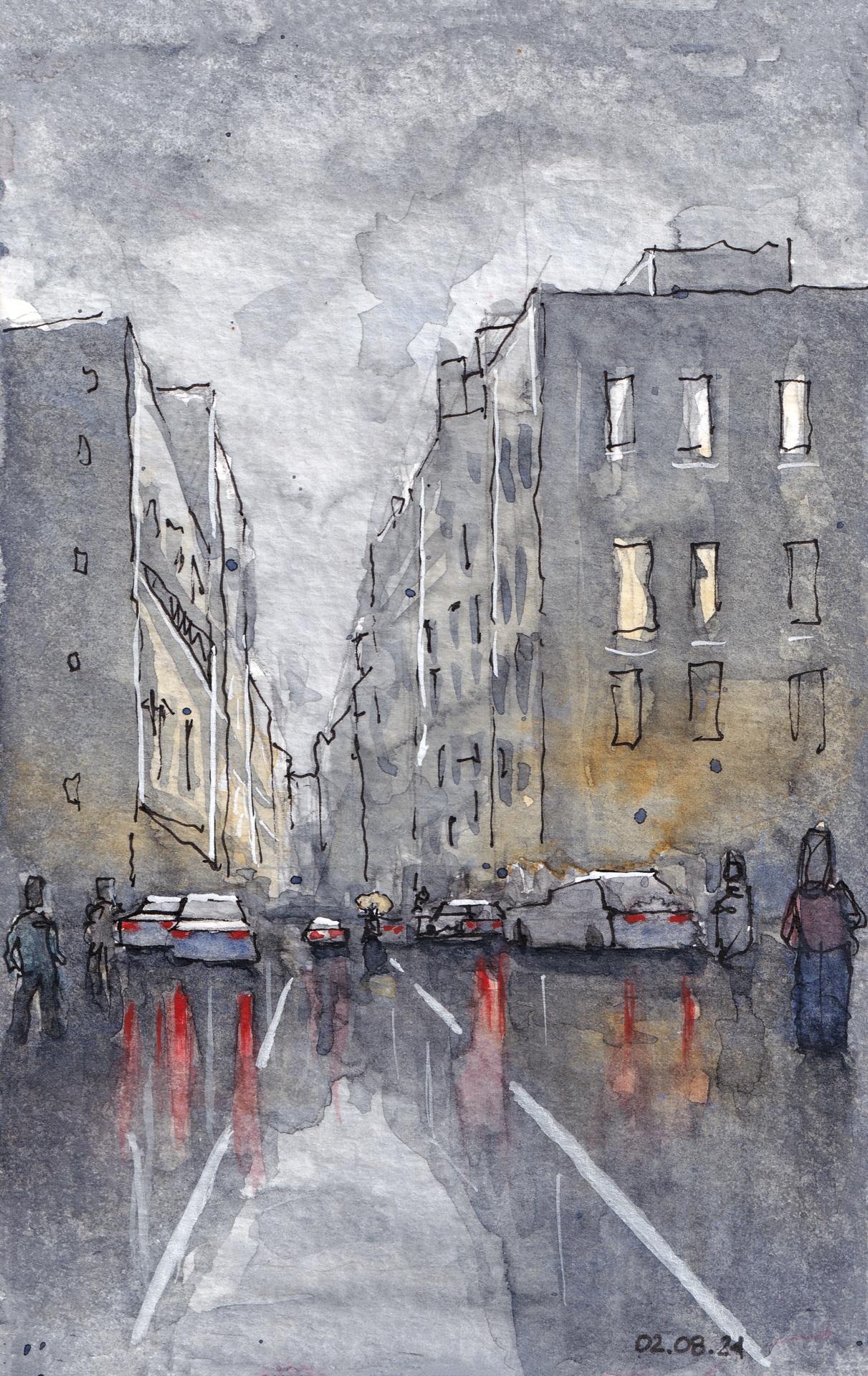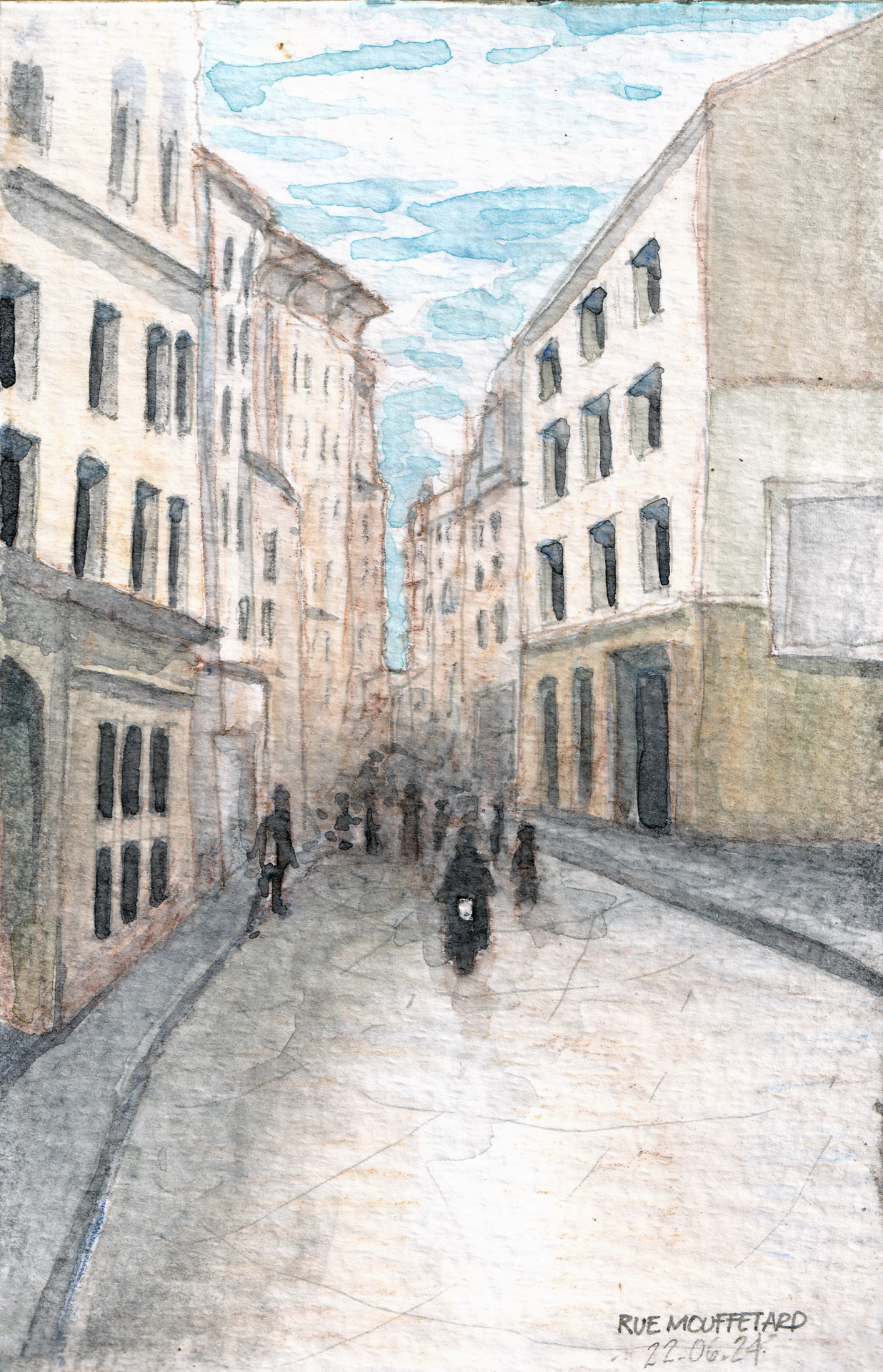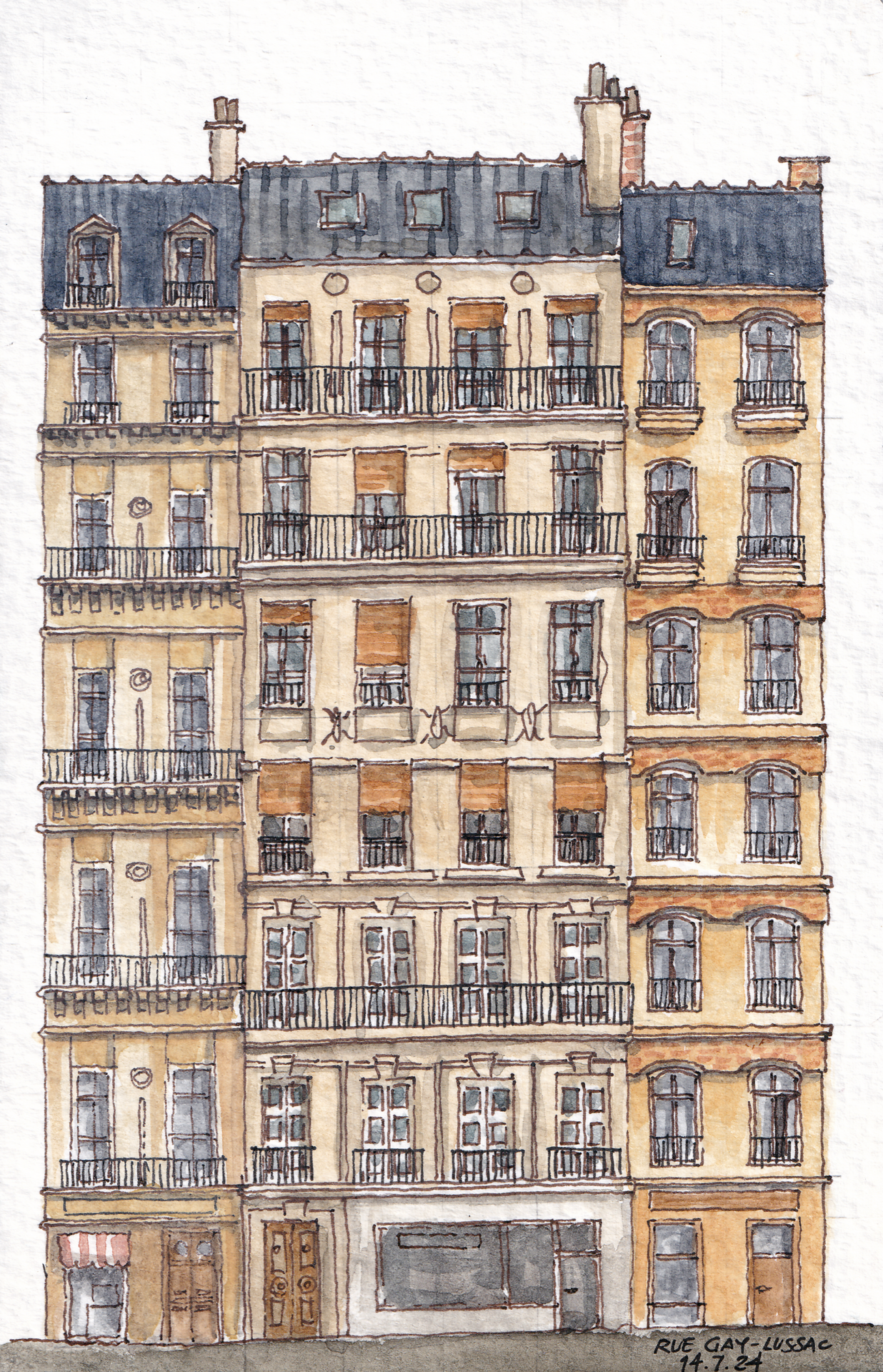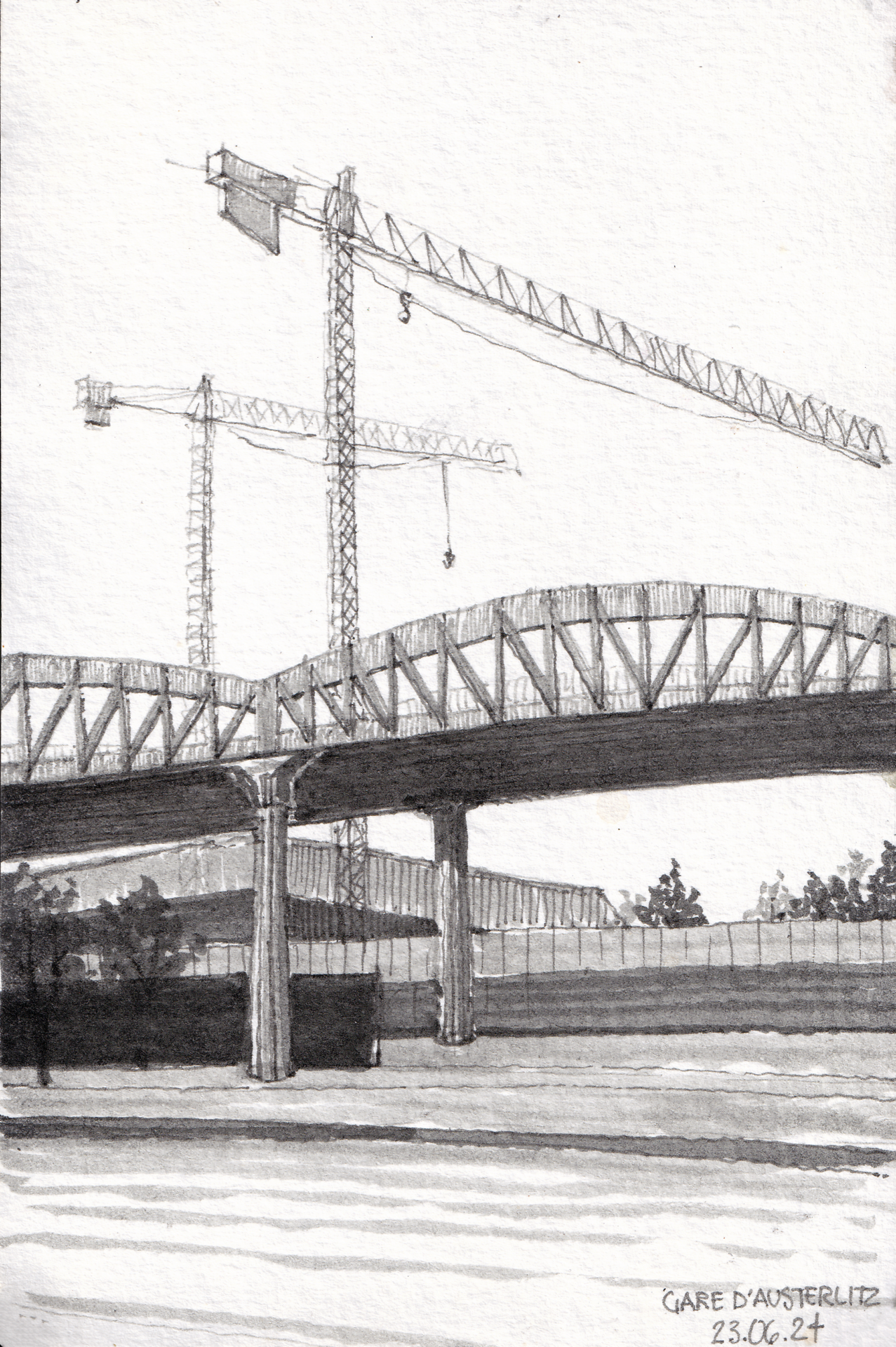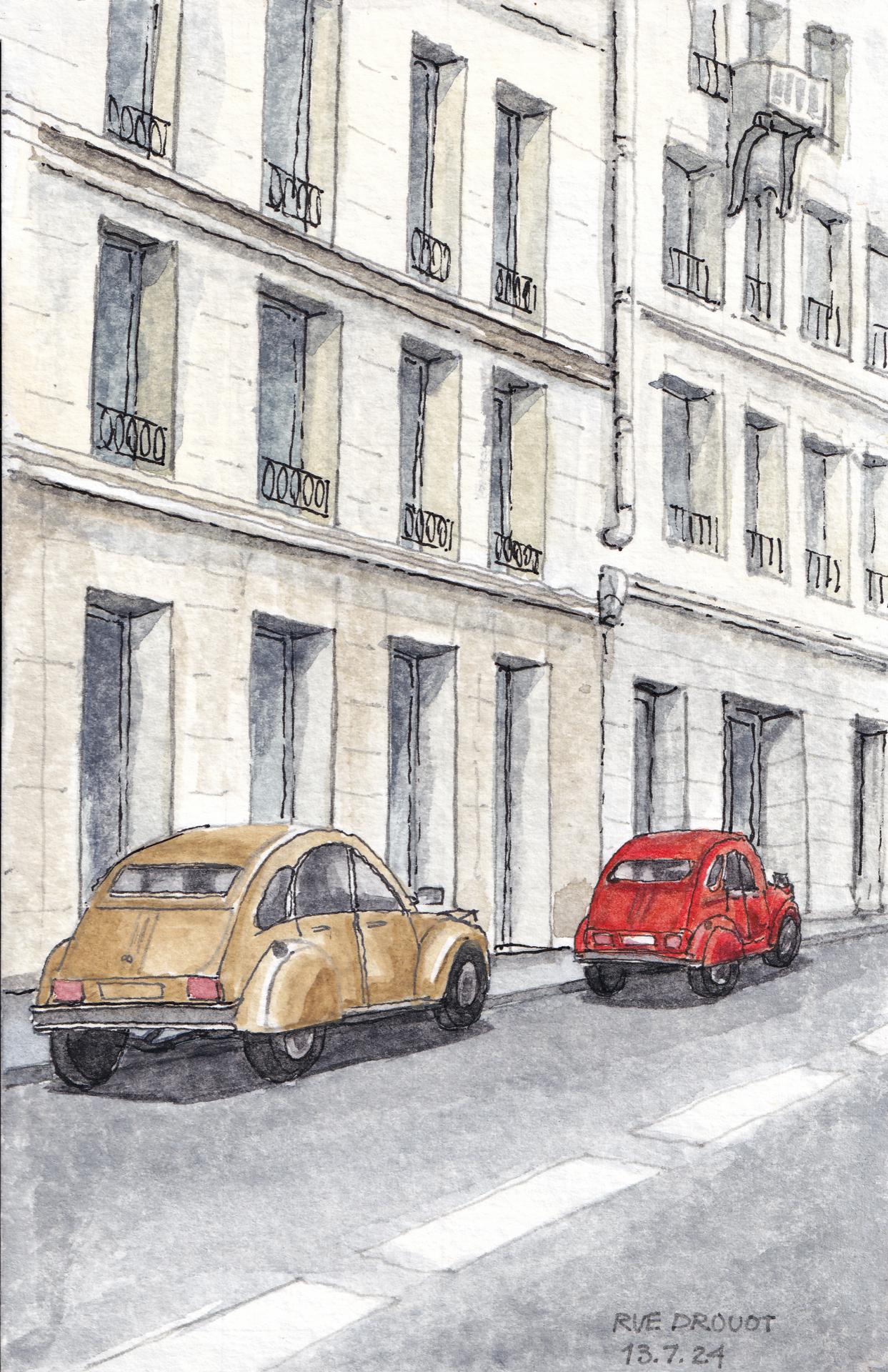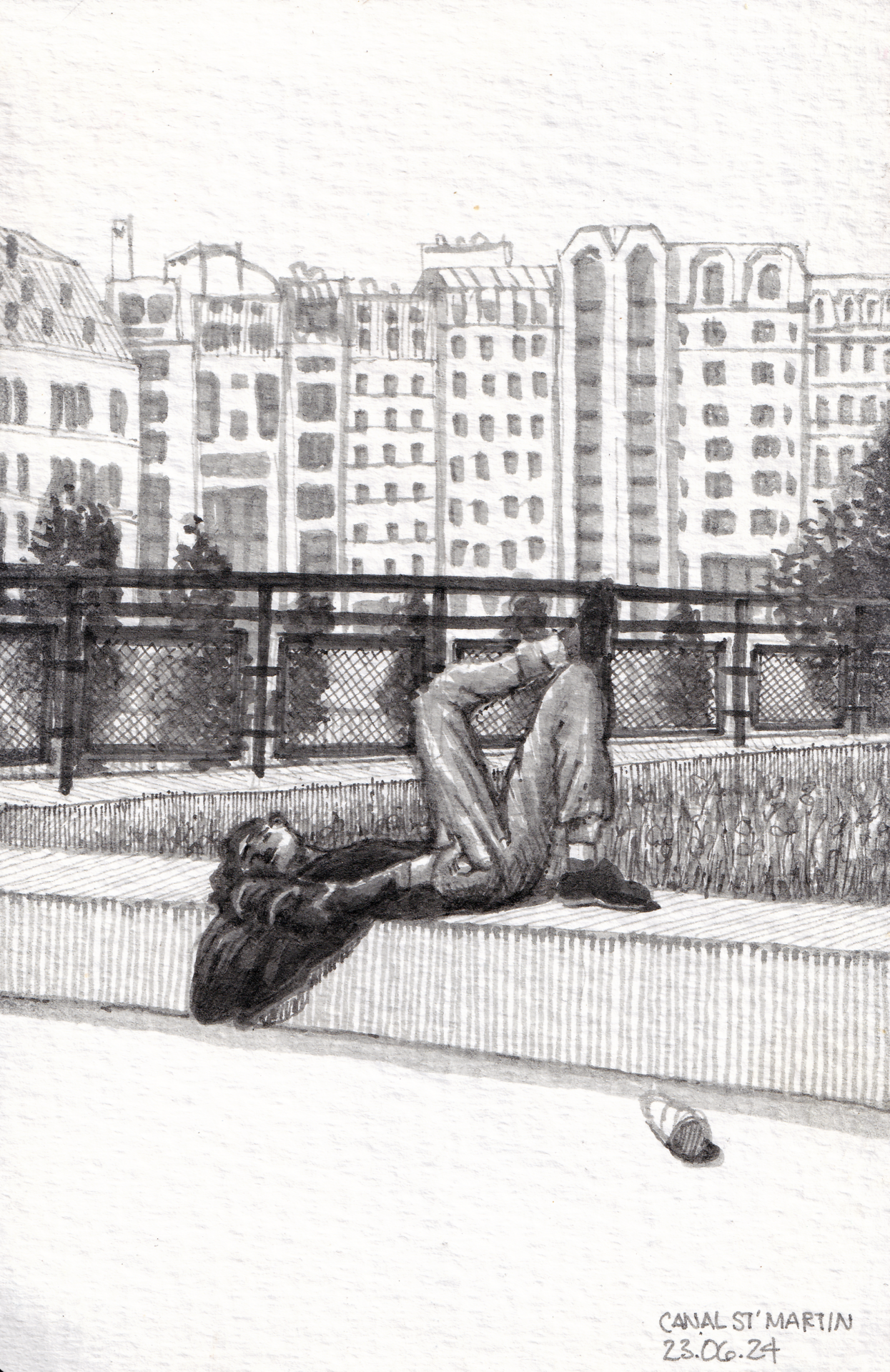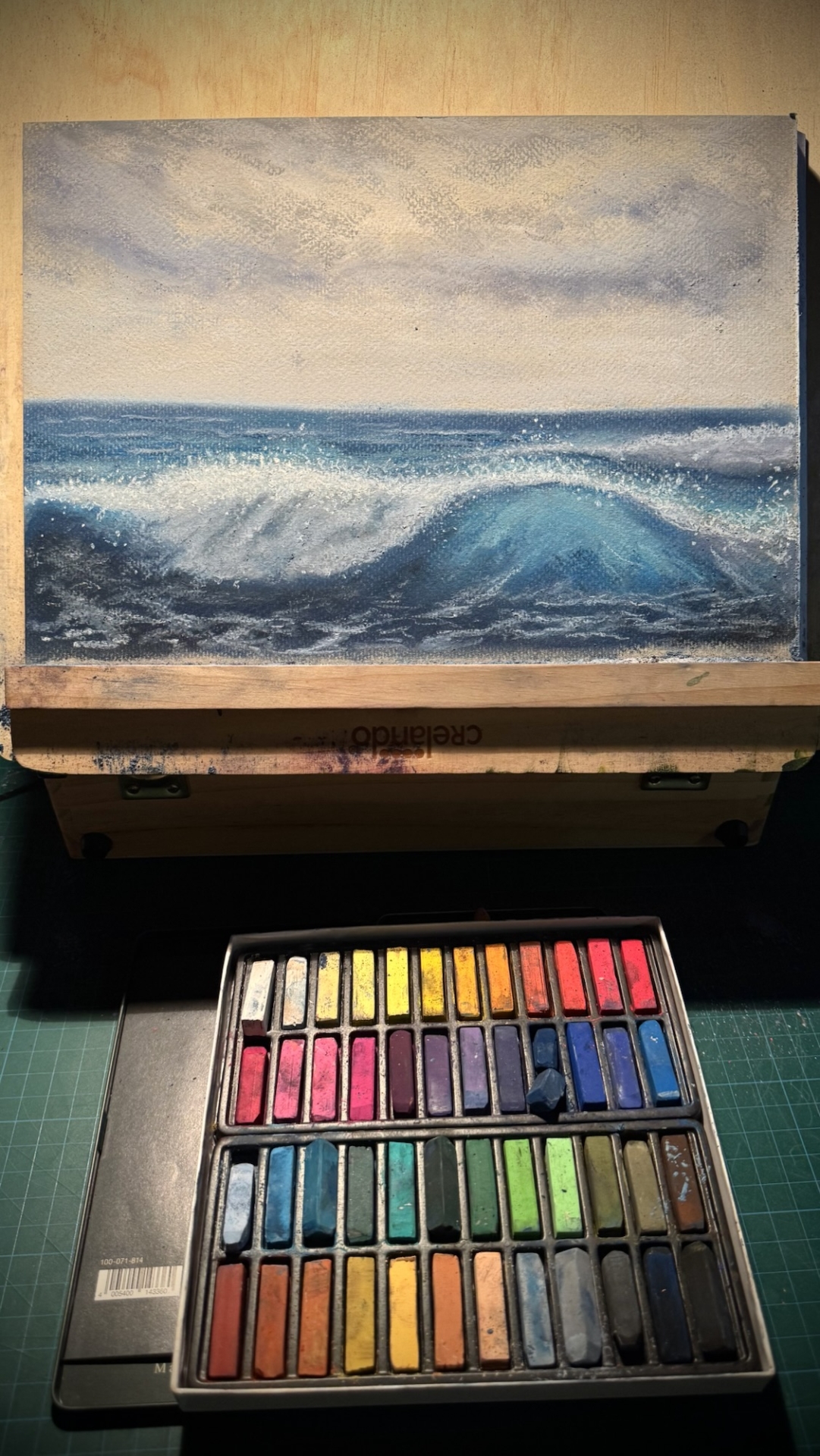
It’s been years since I last touched any kind of pastels, but for my birthday, I received a 36-mini set from Faber-Castell. So, I figured it was the perfect time to try again.
Exploring the Colors – First Studies:

To get a feel for the set, I started with three small nature studies, each under different lighting conditions.
I wanted to understand the range of colors and how they interact with each other.
It was mesmerizing to watch the pigments blend, shifting and merging effortlessly under my fingertips. One of the things I really enjoyed was how light colors could cover darker ones—and vice versa—something you don’t get as easily with other mediums.
Bringing It All Together – A Sunset by the Lake

After those initial studies, I moved on to a larger piece: a lake at sunset.
This painting was an attempt to combine the different palettes I had tested before, layering warm and cool tones to create depth.
I have to say, I love how vibrant the colors are—soft pastels really pop in a way that watercolor doesn’t.
Testing Detail – A Close-up Sea Scene

For the final painting, I wanted to push things further and see how much detail I could achieve.
I chose a close-up sea scene, playing with a mix of blurry and sharp elements.
This was a great test of control, figuring out where I could refine edges and where to let the colors softly transition.
Final Thoughts
Painting with soft pastels is incredibly satisfying—the rich, velvety colors, the tactile blending—but it’s also very messy. If you’re thinking of trying them, just be prepared for dust-covered hands (and probably a desk that looks like a crime scene of color). But in the end, it’s absolutely worth it.
Have you tried soft pastels before? What’s your favorite way to use them? Let me know in the comments!

